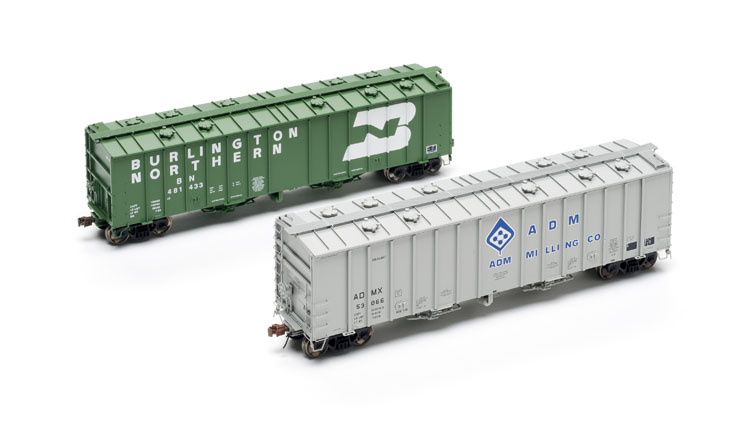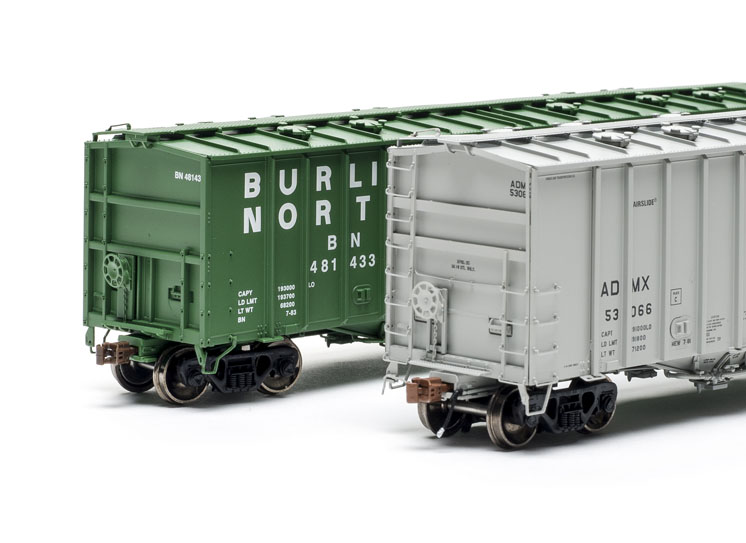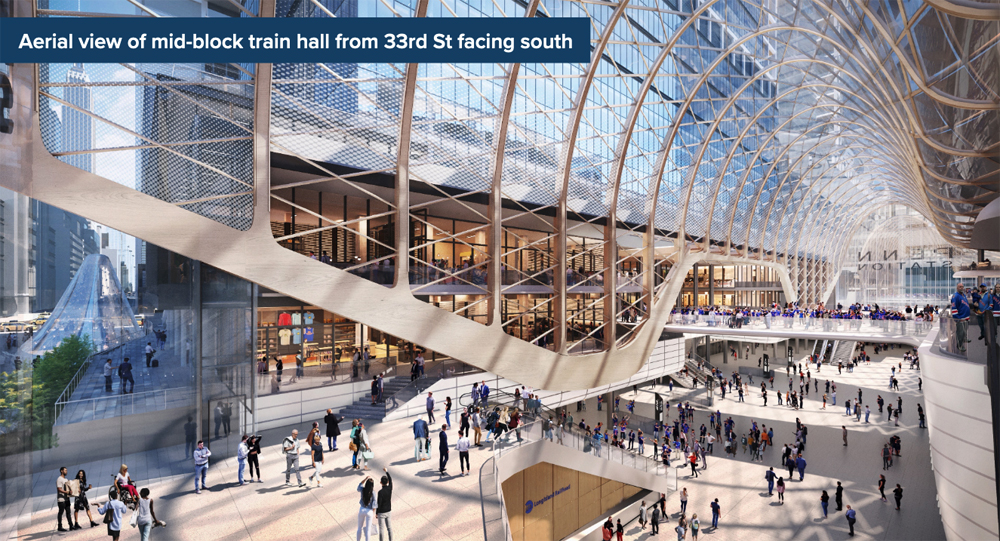ScaleTrains.com has added a pair of General American Airslide covered hoppers to its HO scale freight car line-up. The first is a 4,566-cubic-foot-capacity car, part of the company’s Rivet Counter line. The second is a 4,180-cubic-foot-capacity car, an Operator line model.
Both cars have a one-piece injection-molded plastic body with a separately applied roof. A steel weight is secured to the inside of the body with two ringed-head screws.
As the photo above shows, the level of detail differentiates the Rivet Counter (ADM Milling Co.) and Operator (Burlington Northern) lines. The ADM car has etched-metal running boards, wire grab irons, metal couplers, and Barber S-2 100-ton trucks with rotating bearing caps. The BN car has plastic running boards and couplers, holes for separately applied details, and trucks with non-rotating bearing caps. A modeler- installed detail set for Operator line cars is available separately.
General American produced the full-size 4,180-cubic-foot-capacity Airslide from 1963 to 1980. Over the course of the production run, there were variations, referred to as “phases” by railfans. The ScaleTrains.com car is a phase “TZL” car produced from 1966 to 1969. Features on these cars include a low handbrake on the B end and four grab irons on each side corner.
Our 4180 Airslide is decorated as BN no. 481433, part of the railroad’s 481400-481457 series. The prototype was built for the St. Louis-San Francisco (Frisco) in 1969 and came to BN in 1980. The lettering, simplified on Operator line cars, matches prototype photos.
The full-size 4,566-cubic-foot-capacity Airslide covered hoppers were built from 1978 to 1985. Both the 4180 and 4566 covered hoppers were designed to carry dry, granular, or powdered commodities such as sugar, flour, starch, and clay, among other items.
Our 4566 Airslide is lettered as ADM Milling Co. no. 53066, part of the 53051-53100 series built in June 1981. The car is painted in its as-delivered scheme with the “molecule” logo.
The 4180 and 4566 Airslide covered hoppers closely follow prototype dimensions published in the 1970 and 1984 editions of Simmons-Boardman’s The Car and Locomotive Cyclopedia, respectively. Though the cars have different capacities, the biggest visual difference between the two is the height. The 4180 measures 14′-4″ from the top of the rail to the top of the running board. The 4566 measures 15′-31⁄16 “.
I tested both cars on our Beer Line and Wisconsin & Southern project layouts. The cars negotiated the 18″ curves on the Beer Line, but the manufacturer recommends a 22″ radius. The only problem
I encountered was with the B-end coupler on the BN car. After a shove move, the coupler wouldn’t always stay closed when I switched directions. If you use between or under-the-rails uncoupling magnets, note that ScaleTrains.com doesn’t use trip pins on its couplers.
If you’re looking for bulk commodity haulers for your HO layout, check out these Airslide covered hoppers from ScaleTrains.com.
Price: Rivet Counter, $39.99; Operator, $22.99
Manufacturer
ScaleTrains.com Inc.
7598 Highway 411
Benton, TN 37307
www.scaletrains.com
Era: 1963 to present
Road names: Six schemes per body style, two to four numbers per scheme.
Features
•36″ metal wheels, correctly gauged on both cars
• Weight: 4.4 ounces (Rivet Counter), correct per National Model Railroad Association Recommended Practice 20.1; 4.2 ounces (Operator), .2 ounce light per NMRA RP-20.1















